Blame umpires, not Tabata for Scherzer's lost chance at perfection

Max Scherzer was robbed. It’s not often you can say that about a pitcher that just threw a no-hitter to pitch his team to victory, but it was true of Nationals ace Max Scherzer on Saturday. Scherzer had a perfect game through 8 2/3 innings when pinch-hitter Jose Tabata stepped to the plate to bat for reliever Vance Worley, representing the potential 27th out of what would have been just the 24th perfect game in major league history and first since Felix Hernandez’s in August 2012. True to form, Tabata came out swinging, fouling off Scherzer’s first two pitches to put Scherzer just one strike away from perfection. Trying to get the aggressive 26-year-old Venezuelan to chase, Scherzer threw a slider in the dirt and a 97 mile per hour fastball up out of the zone. Tabata took the first and checked his swing on the second to even the count at 2-2. He then fouled off three more pitches before Scherzer came back inside with a slider. Rather than evade the pitch, however, Tabata dropped the pad on his left elbow below his waist directly into the path of the pitch, breaking up the perfect game with a hit-by-pitch.
It shouldn’t have been allowed. Per Major League Baseball’s official rules, a batter is entitled to first base when “he is touched by a pitched ball which he is not attempting to hit unless ... the batter makes no attempt to avoid being touched by the ball.”
Tabata not only made no attempt to avoid the pitch, he made a very deliberate attempt to be hit by it. For comparison’s sake, the image on the left below shows Tabata taking the slider inside for ball one earlier in the at-bat. The image on the right shows him being hit by the pitch. Note how Tabata is jumping back and out of the way of the pitch on the left, a motion which caused his upper body to drop slightly from his ready hitting position, but still left his elbow above his belt buckle. On the right, he is doing something different entirely. He’s sticking his padded elbow in the way of the pitch.
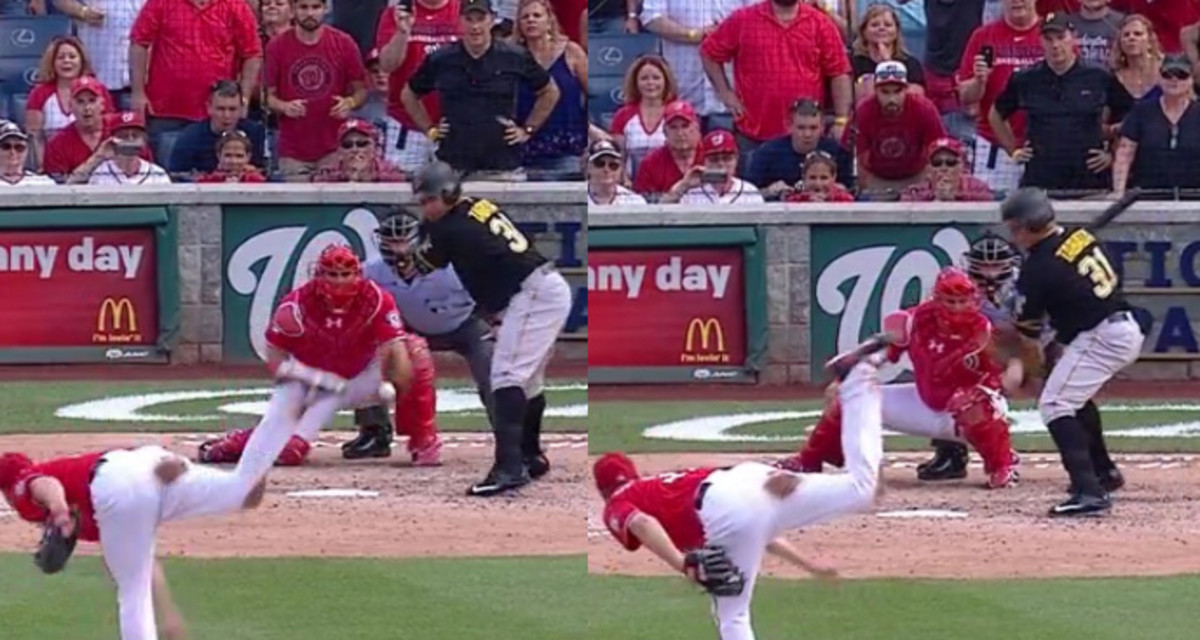
By baseball’s rules, the pitch that broke up Scherzer’s perfect game should have been ruled a ball, and the at-bat should have continued with a full-count. That doesn’t necessarily mean Scherzer would have completed the perfect game. The full count would have been just the third of the game for Scherzer, who was at that point had thrown 103 pitches. One more ball would have ended the bid via a walk, and Tabata, who was 2-for-8 against Scherzer in his career prior to that at-bat, could still have connected for a hit that would have left Scherzer with neither a perfect game nor a no-hitter.
Still, it was clear as day that the umpires blew the call.
I say umpires because, while one could argue that the view of home plate umpire Mike Muchlinski, who is in just his second season as a full-time major league umpire, was blocked by catcher Wilson Ramos’s glove, the other umpires, Sean Barber, Mark Wegner and Mike Winters, should have spoken up about what they saw. If none of them noticed Tabata’s blatant move to be hit by the pitch, they are no more innocent of failing to get the call right.
Most Recent No-Hitters, By Team
Giants

Tim Lincecum pitched his first career no-hitter and the second in the majors in 11 days, a gem saved by a spectacular diving catch by right fielder Hunter Pence in the San Francisco Giants ' 9-0 win over last-place San Diego. The two-time Cy Young winner threw a career-high 148 pitches.
Reds
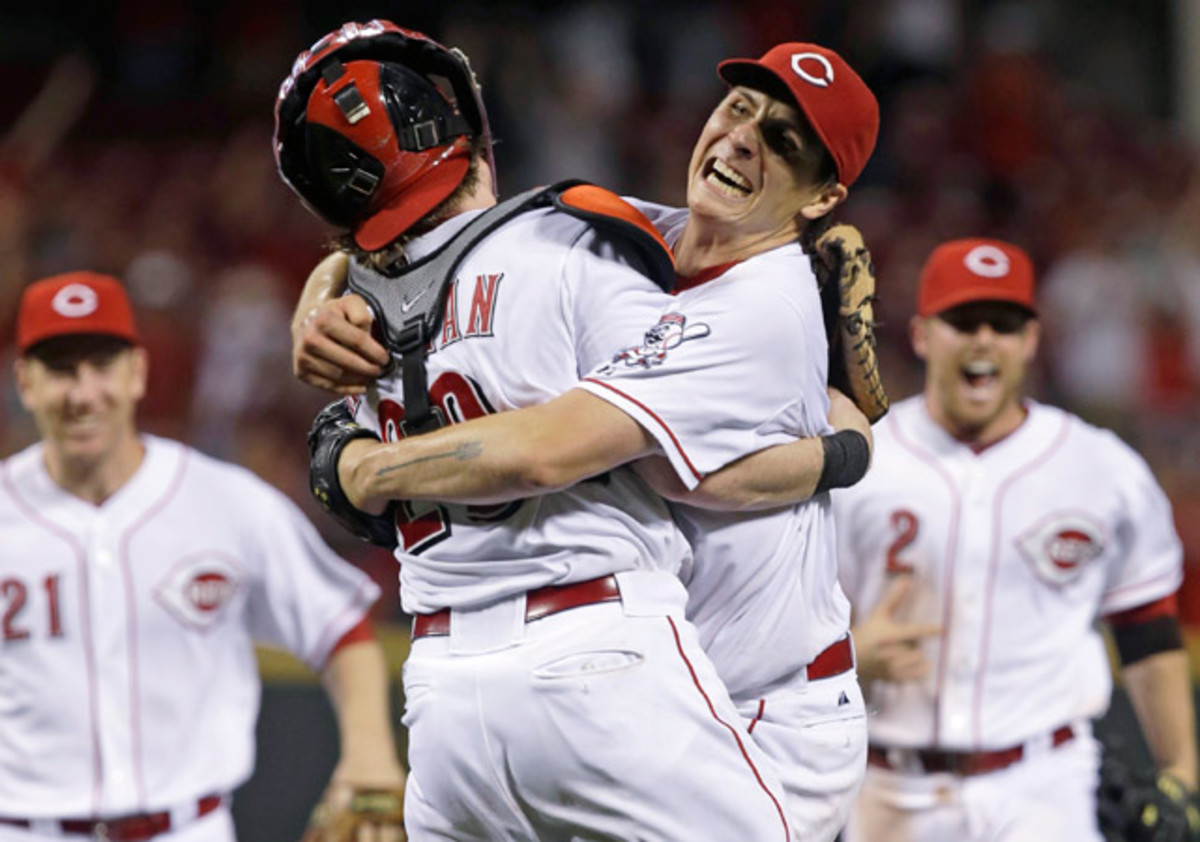
Homer Bailey pitched his second no-hitter in 10 months, becoming the first player in baseball to throw MLB's two most recent no-no's since Nolan Ryan in 1974-75. Bailey allowed just one walk and struck out nine against the Giants in a 3-0 win, surrendering his perfect game in the in the 7th inning when he walked Gregor Blanco. Bailey would later get Blanco to ground out in the 9th to end the game, becoming the third pitcher in Reds history to throw multiple no-hitters.
Mariners
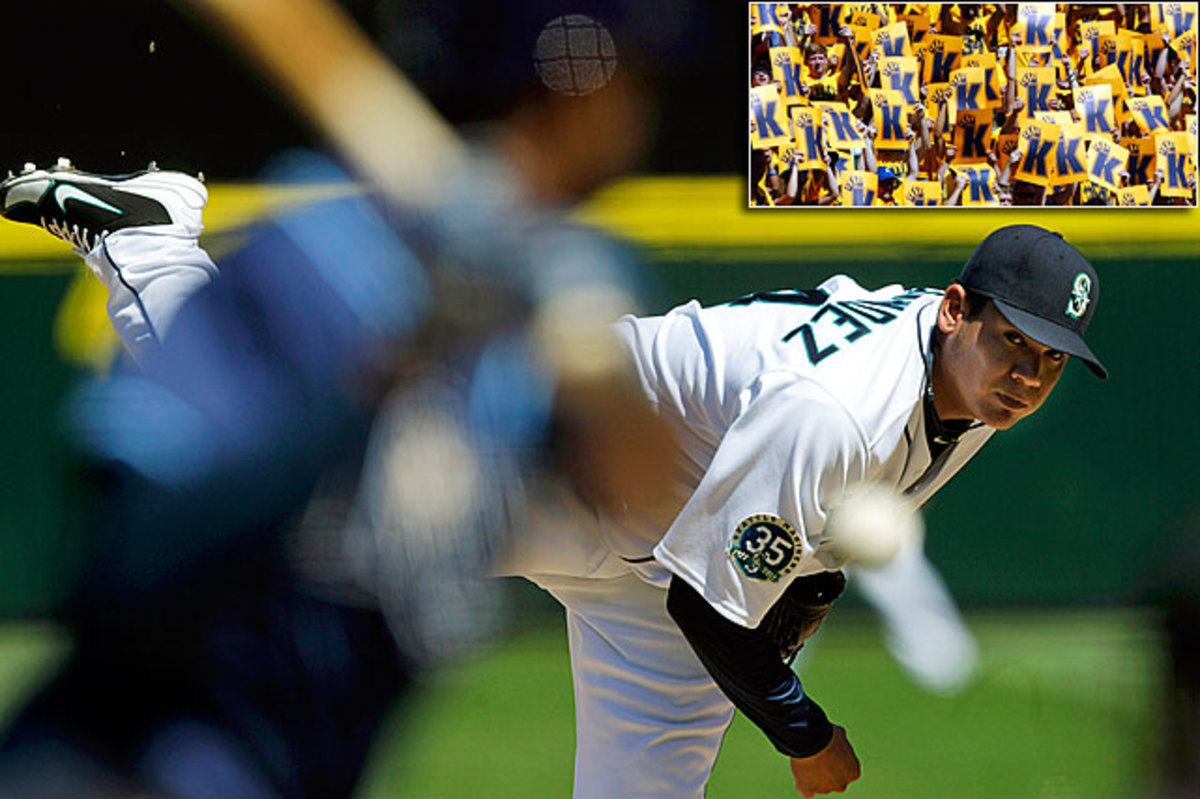
The Mariners' ace and former AL Cy Young Award winner pitched the team's first perfect game, overpowering the Tampa Bay Rays with 12 strikeouts in a brilliant 1-0 victory. The game was Seattle's second no-hitter of the season. On June 8, six pitchers -- Kevin Millwood, Charlie Furbush, Stephen Pryor, Lucas Luetge, Brandon League and Tom Wilhelmsen -- combined to no-hit the Dodgers in what was also a 1-0 victory.
Mets
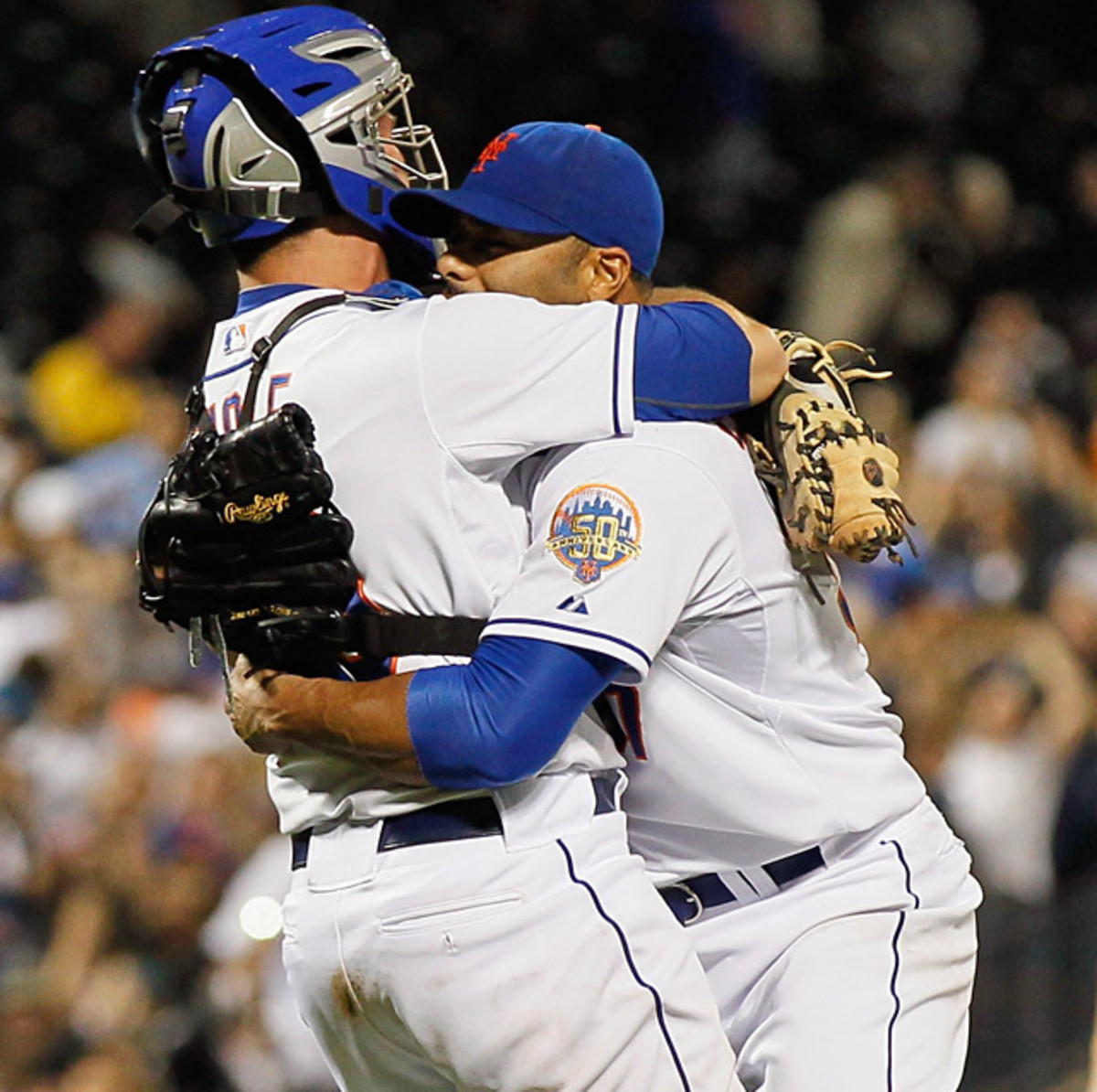
After 35 one-hitters, the Mets finally got the first no-no in franchise history. Johan Santana, who missed all of last season while recovering from shoulder surgery, struck out eight and walked five as New York beat the Cardinals 8-0. It left the Padres as the only team without a no-hitter.
Angels

Jered Weaver pitched the 10th no-hitter in franchise history, striking out nine in a 9-0 victory over the Twins, who never came close to getting a hit. Weaver allowed just two baserunners. Chris Parmelee reached in the second inning when he struck out and advanced on Chris Iannetta's passed ball, and Josh Willingham worked a walk in the seventh. Weaver became the first Angels pitcher to throw a no-hitter in Angel Stadium since Nolan Ryan on June 1, 1975.
White Sox
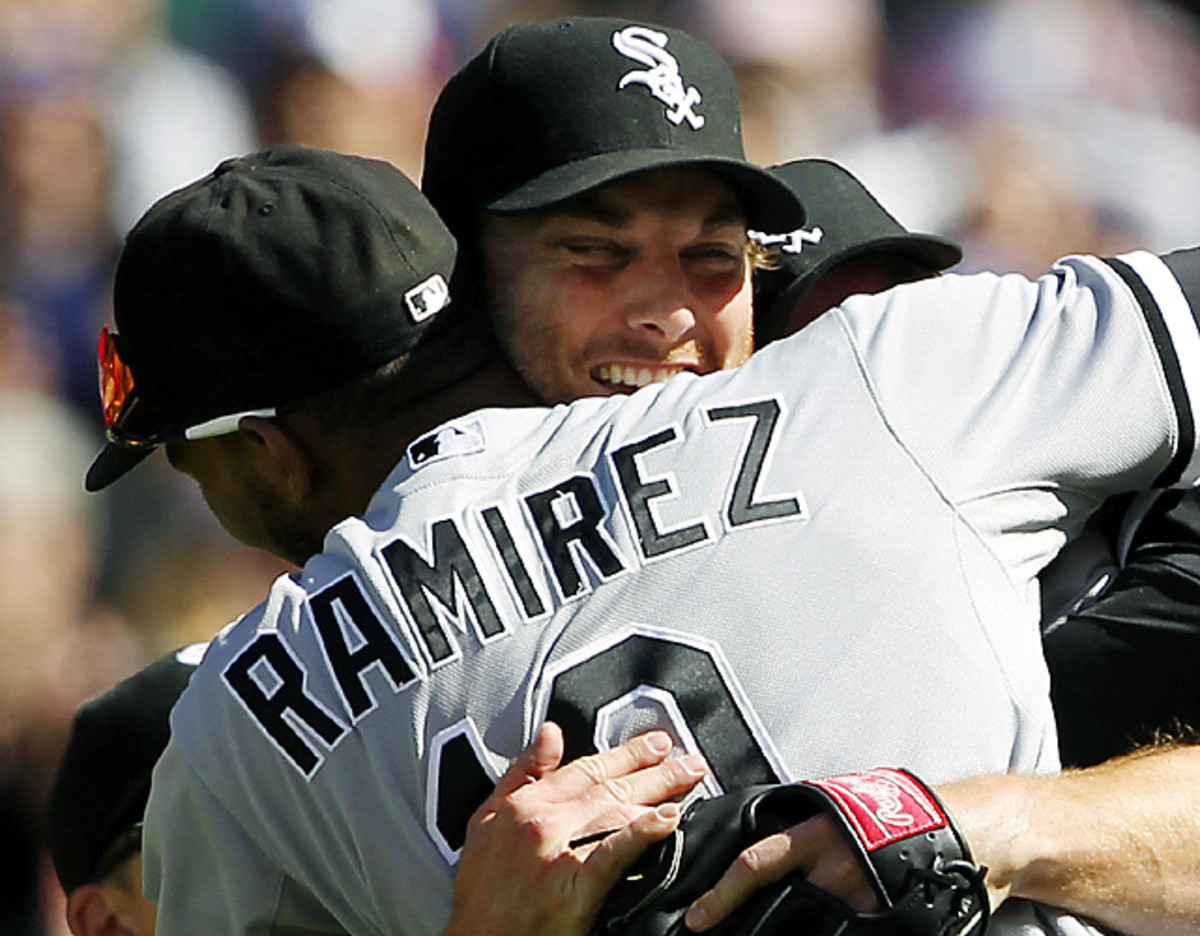
Philip Humber threw the first perfect game in almost two years, striking out nine for his first win of the season. It was the third perfecto in White Sox history, joining Mark Buehrle (Tampa Bay in 2009) and Charles Robertson (Detroit in 1922). Humber, a former first-round draft pick of the Mets who underwent Tommy John surgery in 2005, needed only 96 pitches to complete the gem. The White Sox beat the Mariners 4-0.
Tigers

Justin Verlander threw his second career no-hitter and the second in the big leagues this week, leading the Detroit Tigers to a 9-0 victory over the Toronto Blue Jays. Verlander barely missed a perfect game. The only runner he allowed came with one out in the eighth inning, when rookie J.P. Arencibia drew a 12-pitch walk. Minnesota's Francisco Liriano tossed a no-hitter against the Chicago White Sox on May 3.
Twins

In his previous start Liriano had lasted three innings and his ERA had ballooned to 9.13. But he delivered the seventh no-hitter in Twins history, and the first since Eric Milton in 1999, as he struck out two and walked six in a 1-0 win over the White Sox. The 123-pitch erfort was just the first complete game of Liriano's six-year career.
Phillies
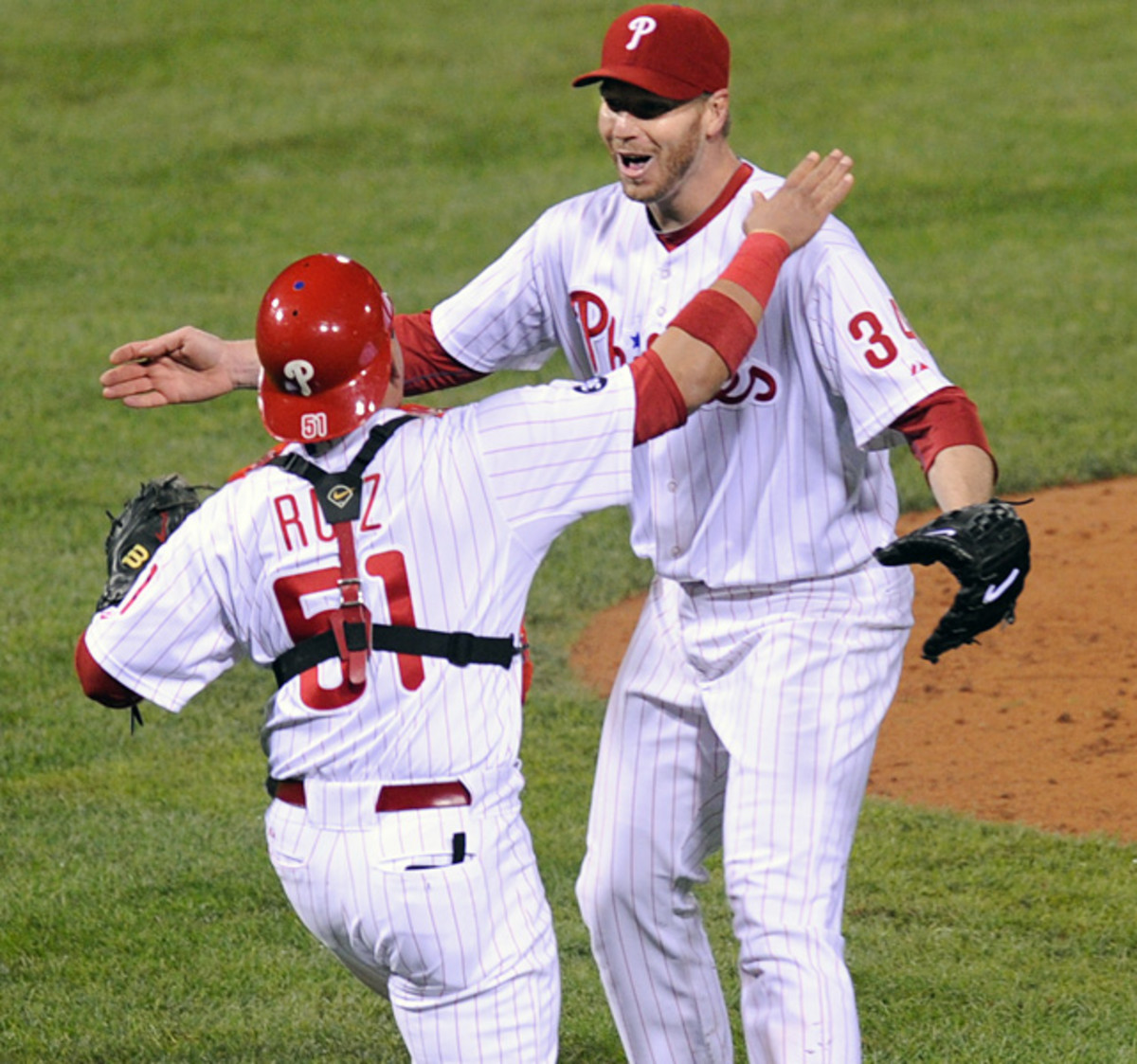
Halladay threw just the second no-hitter in postseason history as the Phillies beat the Reds 4-0 in Game 1 of the NLDS. Halladay, who was making the first playoff start of his 12-year career, struck out eight and walked one on 104 pitches. He also threw a perfect game on May 29 vs. the Marlins, making him the fourth author of two no-hitter in the same season along with Nolan Ryan, Virgil Truck, Allie Reynolds and Johnny Vander Meer.
Rays

Matt Garza (center) pitched the first no-hitter in Tampa Bay Rays history and the fifth in the major leagues this season, beating the Detroit Tigers 5-0. Garza faced the minimum 27 batters, allowing only a second-inning walk, for a team that's often been on the wrong end of pitching gems lately. The last time there were at least five no-hitters in a season was 1991.
Diamondbacks
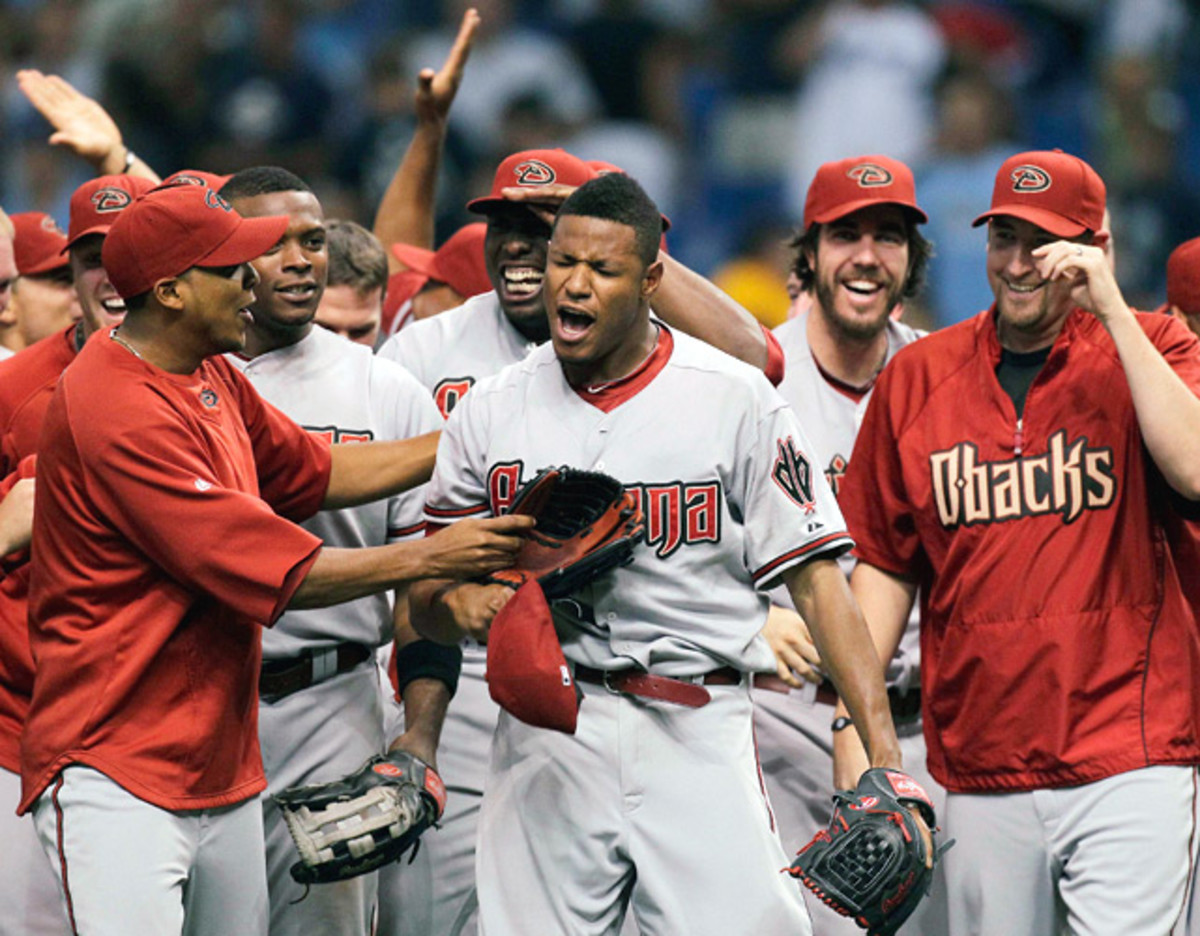
Edwin Jackson overcame a wild start to throw the fourth no-hitter of the season, leading the Diamondbacks to a 1-0 victory over the Rays. Jackson threw 149 pitches and walked eight, all but one in the first three innings, in the second no-hitter in D-backs' history.
Athletics
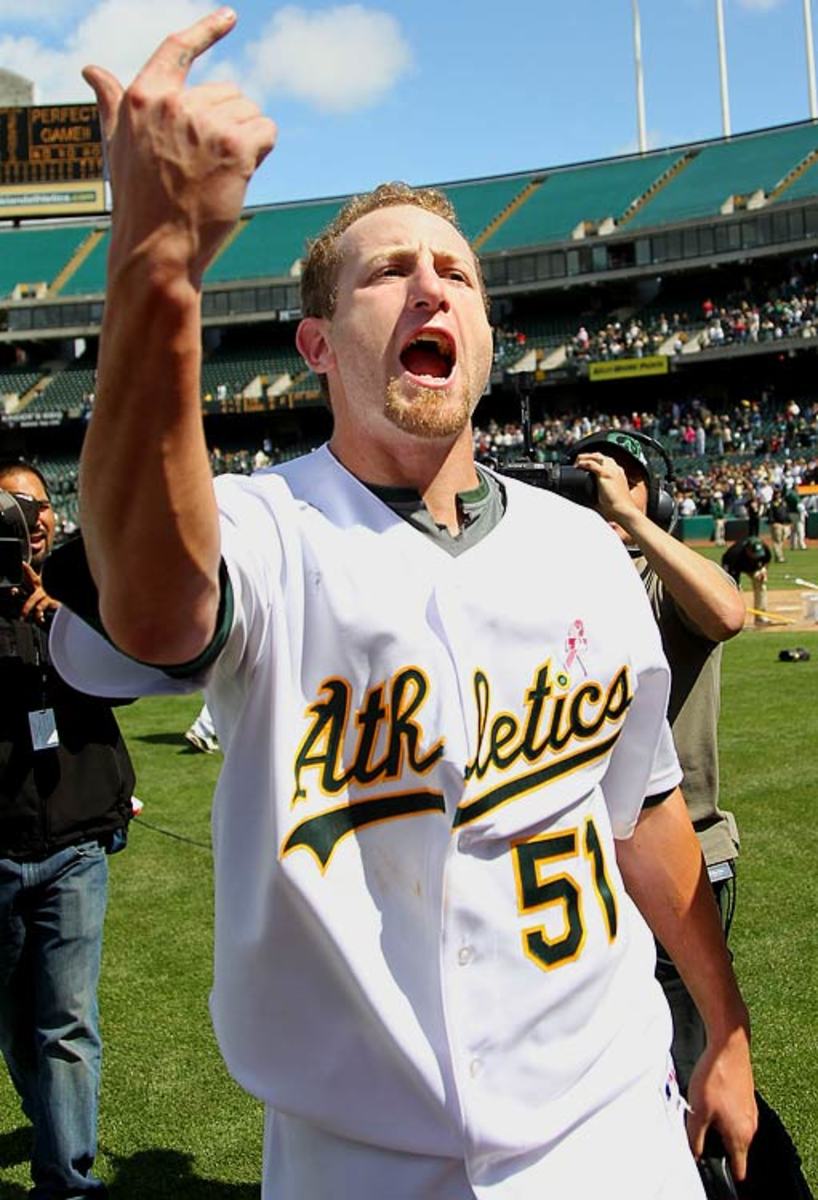
Braden was perfect on Mother's Day, recording the first perfect game for Oakland in 42 years. He was also the beneficiary of some flashy glovework, courtesy of Kevin Kouzmanoff, who sprinted to the dirt in front of Oakland's dugout to catch a foul popup by Dioner Navarro for the second out in the sixth.
Rockies
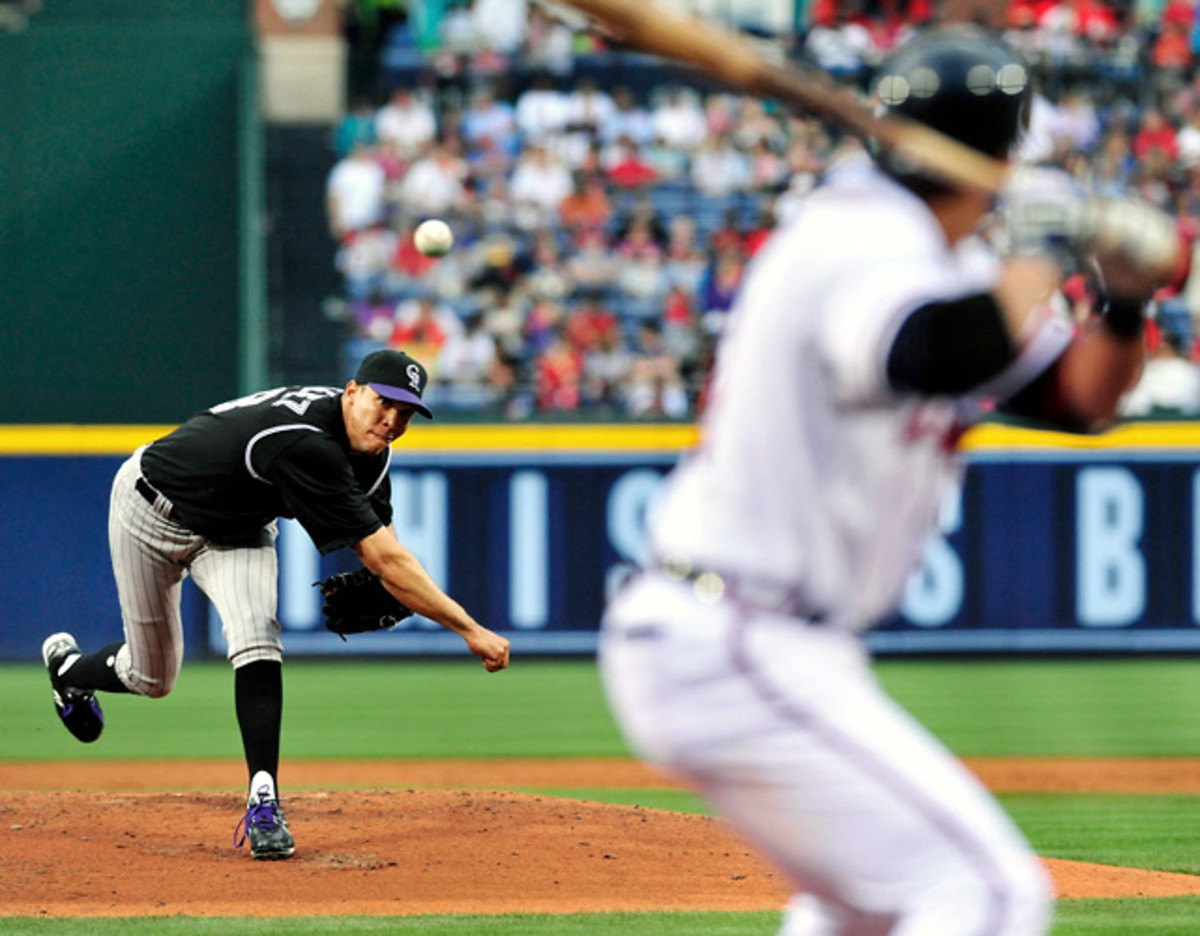
Ubaldo Jimenez pitched the first no-hitter in Rockies history, dominating the Braves in a 4-0 victory. Jimenez walked six -- all in the first five innings -- and struck out seven. He was helped by Dexter Fowler's diving catch on Troy Glaus' drive to left-center field in the seventh inning.
Cubs
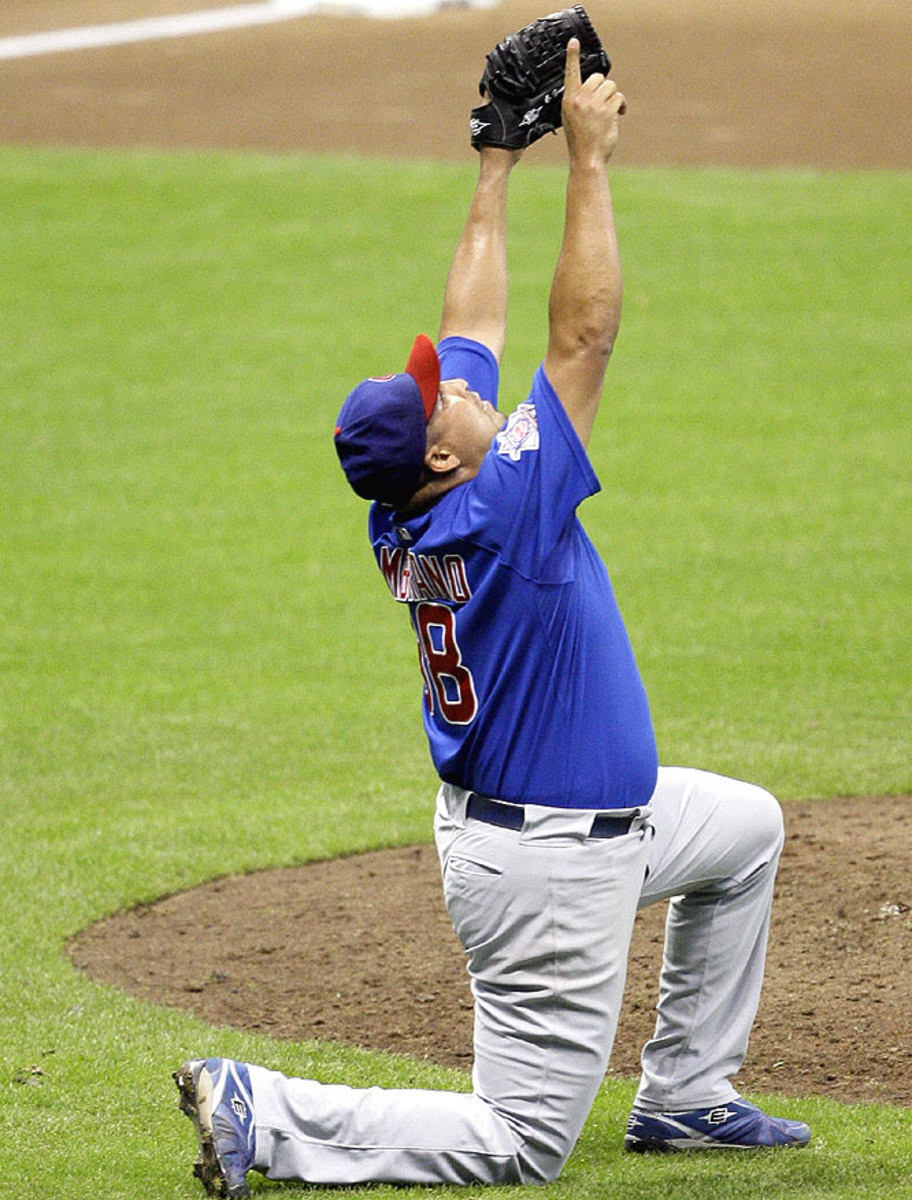
Pitching for the first time in nearly two weeks, Carlos Zambrano stifled the Astros en route to the Cubs' first no-hitter since Milt Pappas in 1972. The game was relocated to Milwaukee's Miller Park because of Hurricane Ike.
Red Sox
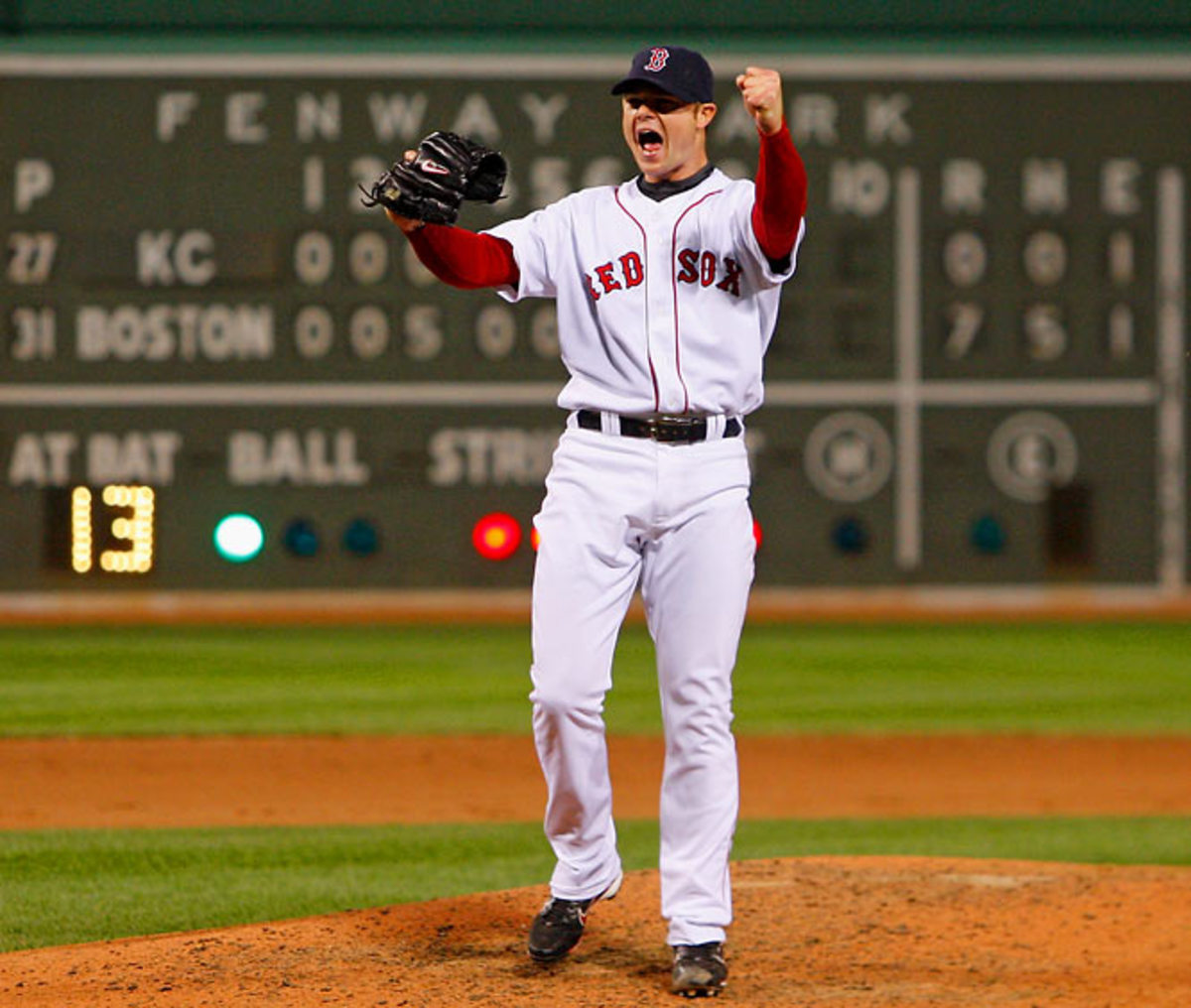
At 22, Lester learned he had lymphoma, but after beating the cancer, he returned to win the clinching game of the 2007 World Series. Then in May 2008, Lester no-hit the Kansas City Royals, allowing just two walks and striking out nine in one of the most inspiring comebacks in baseball history.
Marlins
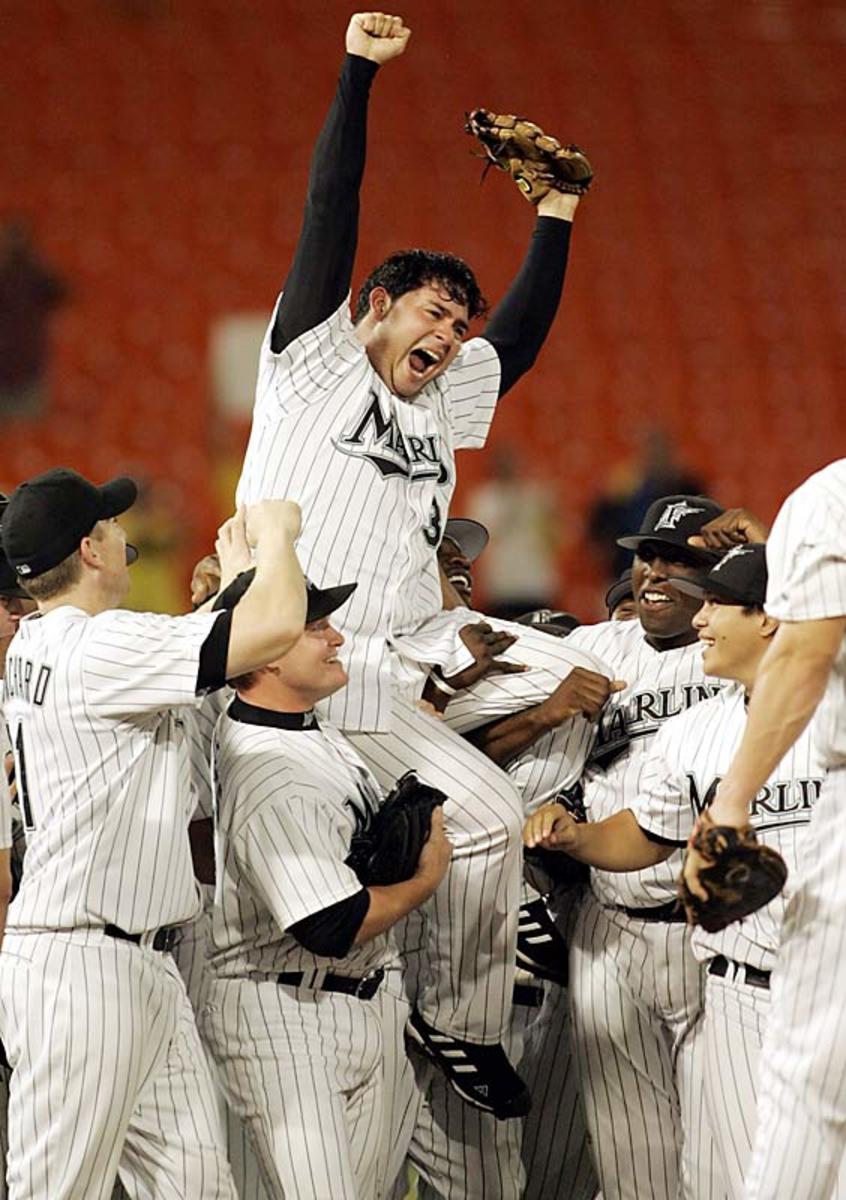
Sanchez, a 22-year-old rookie making his 13th major-league start, hurled a no-hitter in a 2-0 victory over the Diamondbacks.
Astros
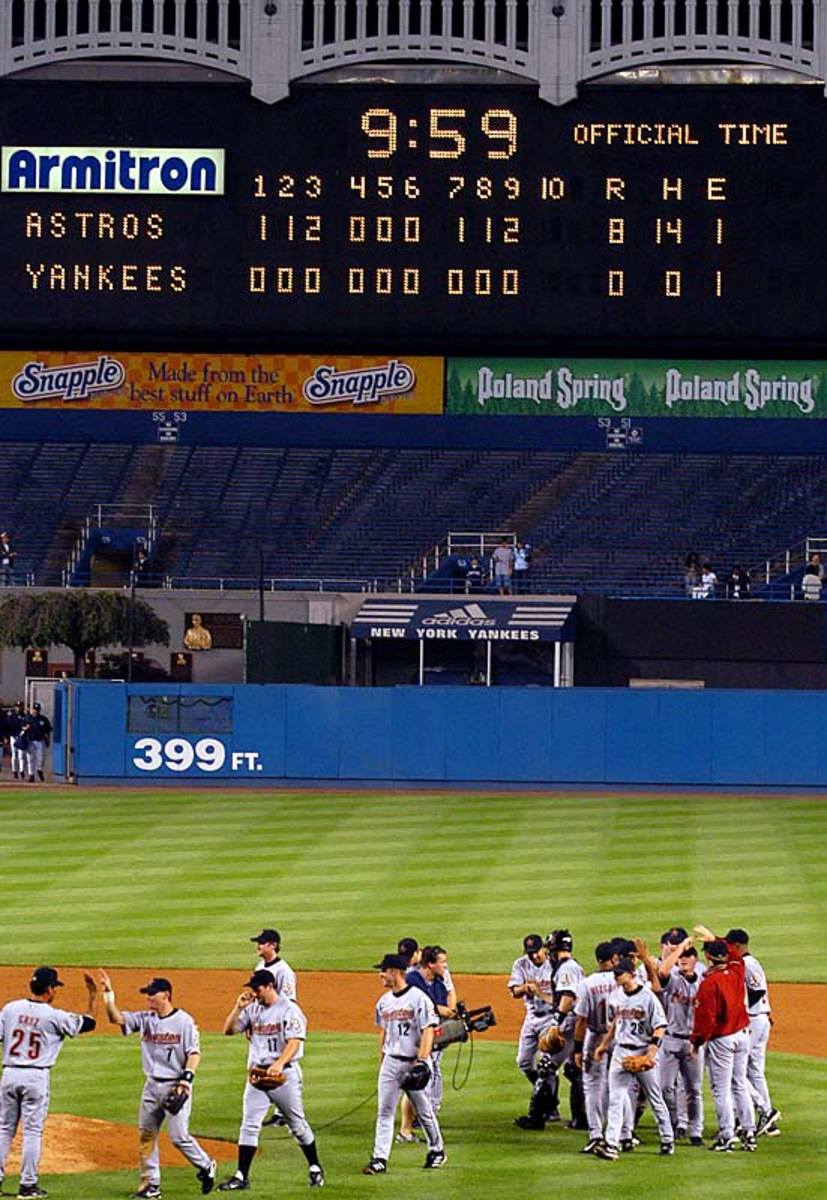
In perhaps the most bizarre no-hitter of all-time, the Astros used a record six pitchers -- Roy Oswalt, Pete Munro, Kirk Saarloos, Brad Lidge, Octavio Dotel and Billy Wagner -- to hold the Yankees hitless in Houston's 8-0 victory.
Cardinals
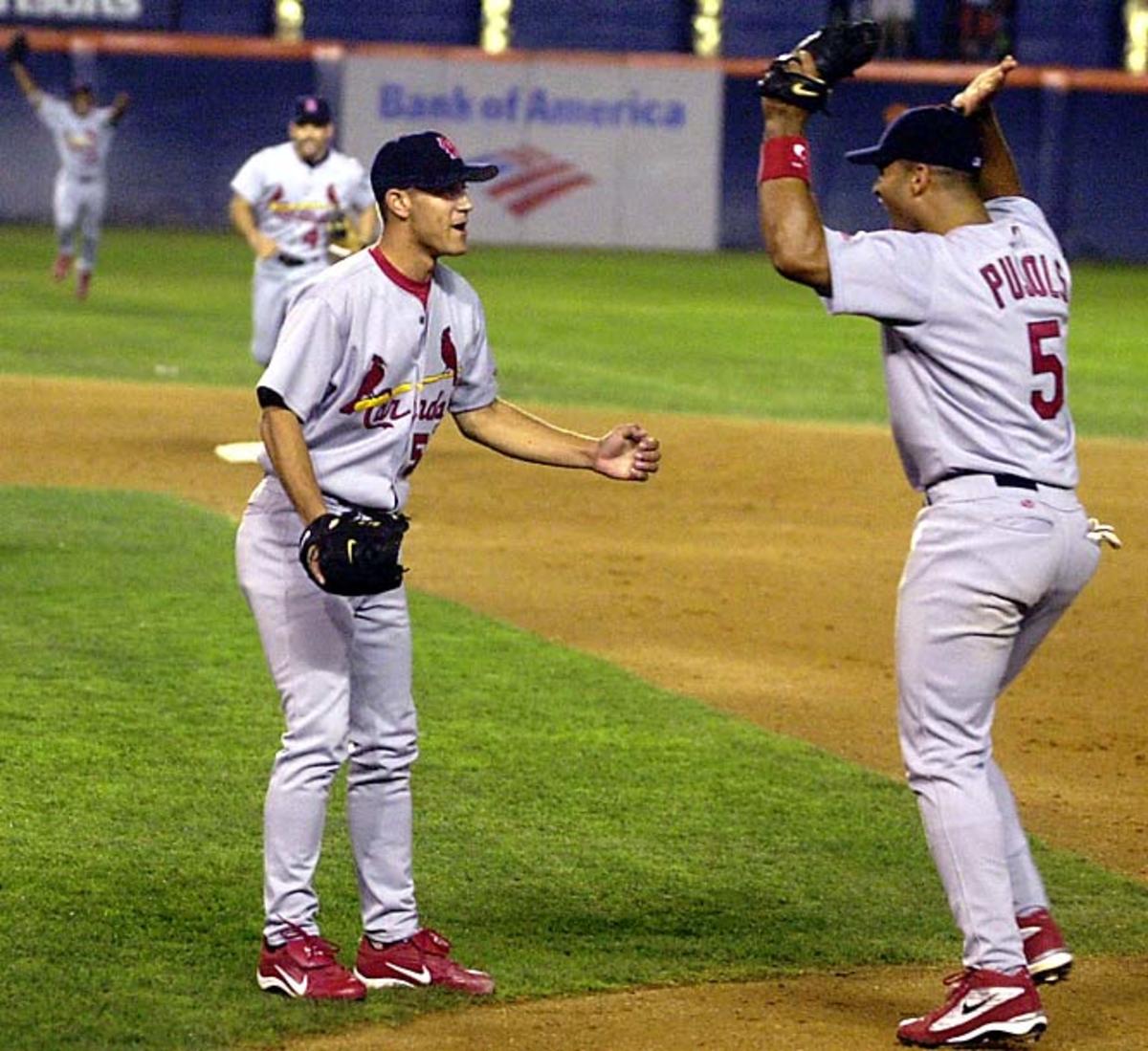
Smith became the 18th rookie since 1900 to throw a no-hitter, tossing a whopping 134 pitches in a 4-0 victory over the Padres. Smith made just 14 more appearances in the majors and was gone for good one year later, at 23.
Yankees
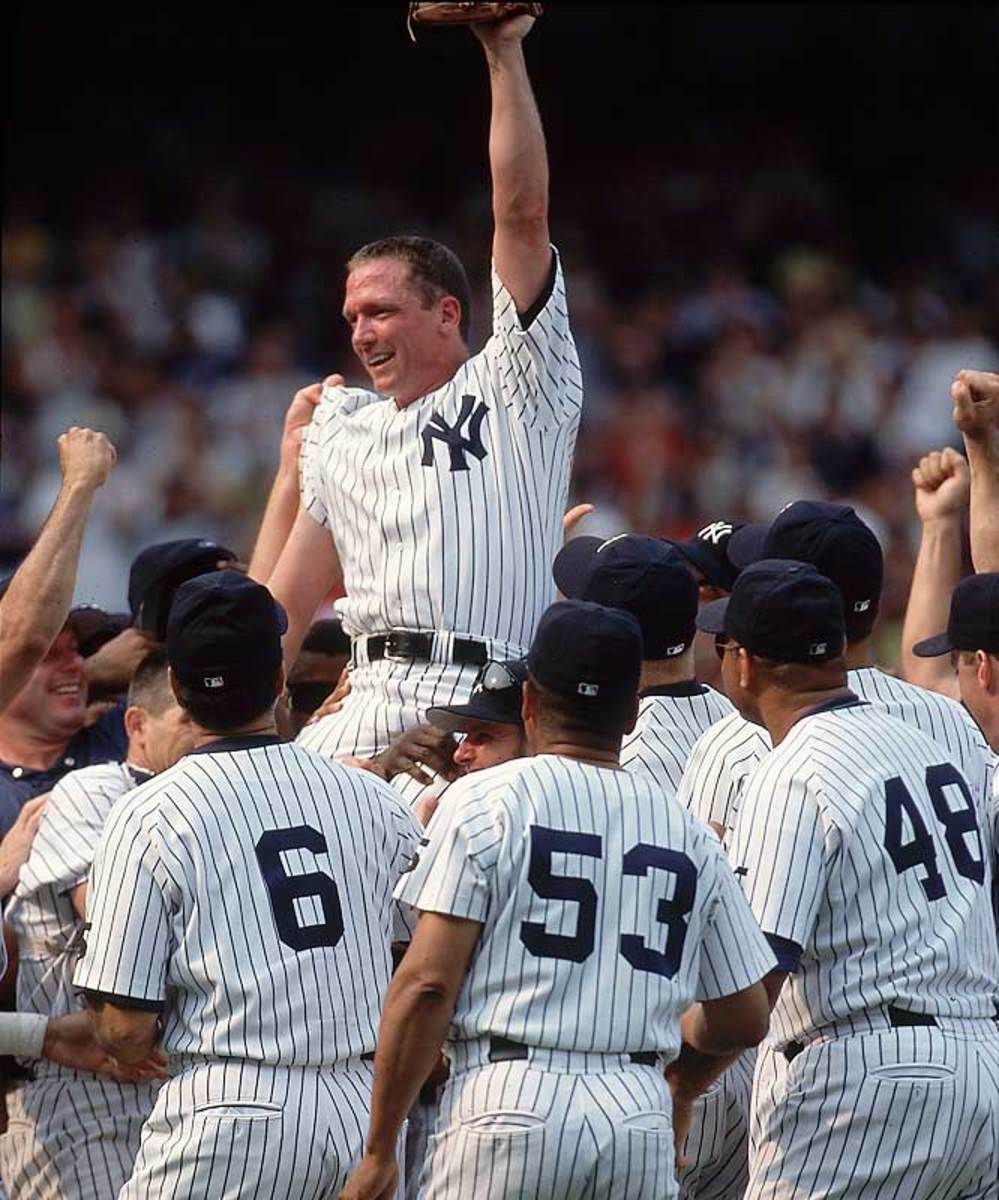
With Don Larsen, the only man ever to pitch a perfect game in the World Series, on hand for Yogi Berra Day, Cone tossed a perfect game of his own, silencing the Montreal Expos in a 5-0 win. Cone survived a 30-minute rain delay in the third inning, and needed just 88 pitches to complete his perfecto, which ended when he got Orlando Cabrera to pop out to third.
Pirates

Cordova, a major league starter for less than a year, pitched the first nine innings of a no-hitter against the Astros. Rincon pitched another inning of no-hit ball when the scoreless game went to the 10th. The no-hitter wasn't secured until Mark Smith's walk-off homer in the bottom of the 10th.
Dodgers
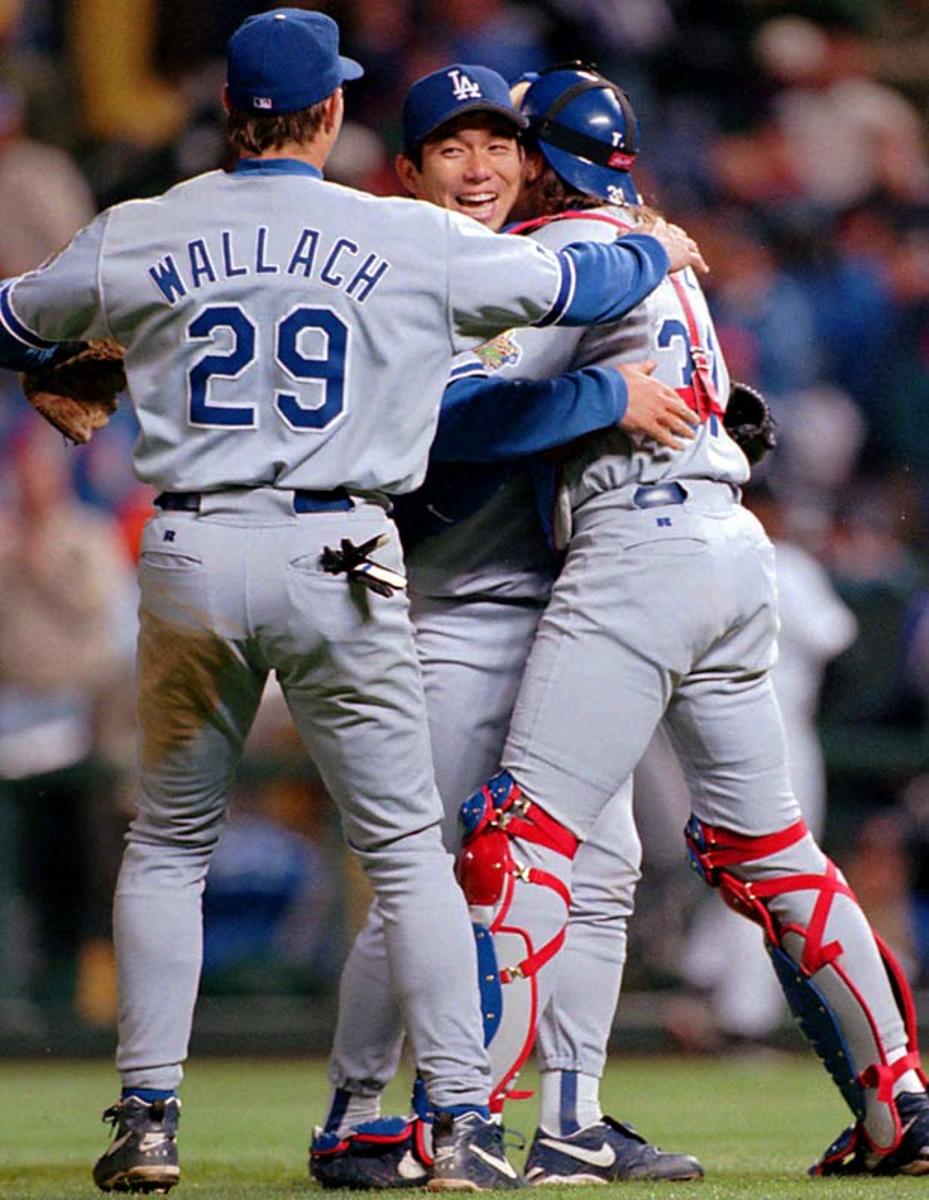
The Japanese fireballer became the first (and last) pitcher to toss a no-hitter at hitter's haven Coors Field in a 9-0 blanking of the Rockies.
Rangers
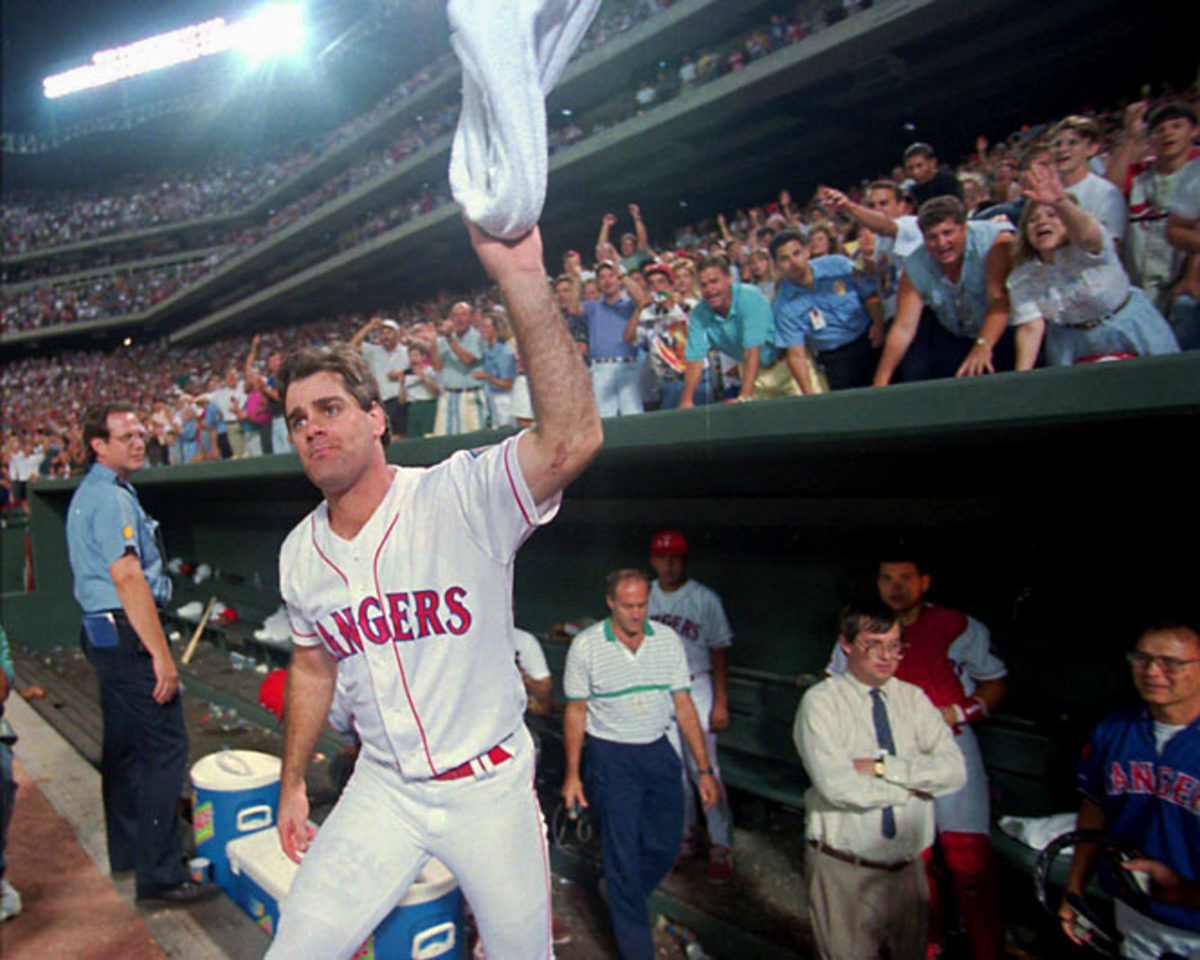
Rogers became the first AL lefty to throw a perfect game when he shut down the Angels 4-0, the first no-hitter at the brand-new Ballpark at Arlington. Center fielder Rusty Greer preserved it with a diving catch on Rex Hudler to start the ninth. Greer had a much easier time handling the final out, a routine fly ball from Gary DiSarcina.
Braves
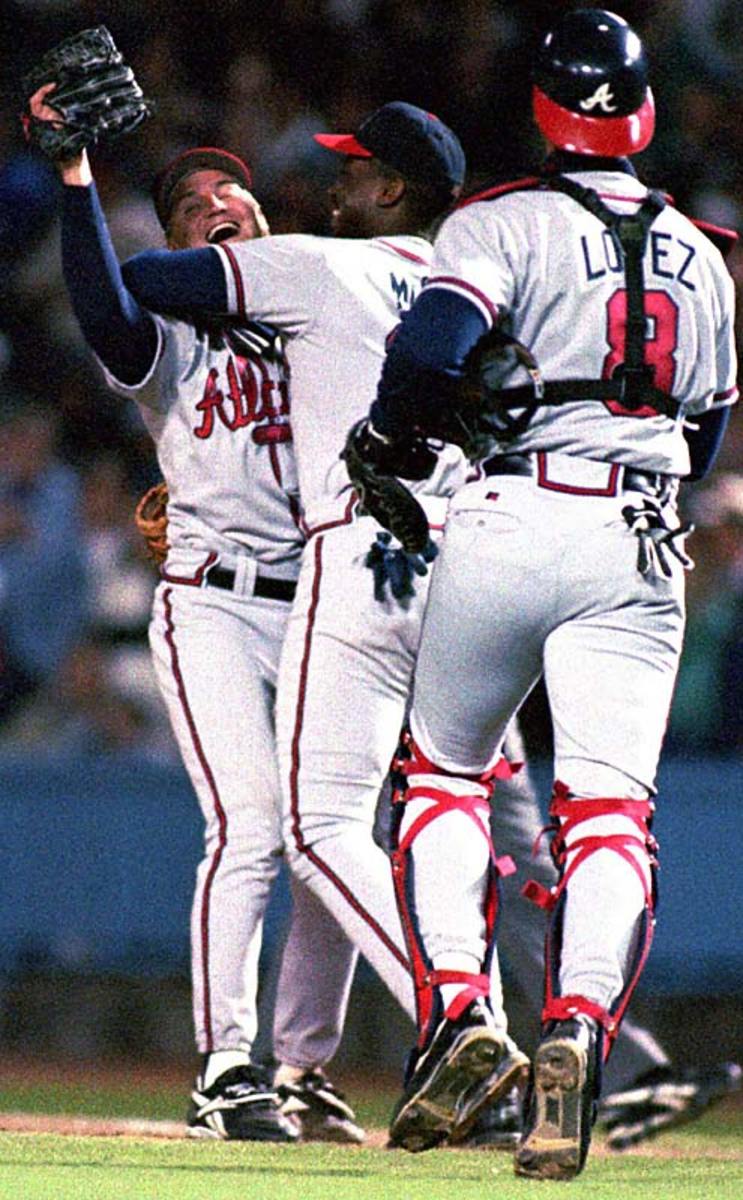
Three years after pitching the first six innings of a no-hitter -- ultimately completed by teammates Mark Wohlers and Alejandro Pena -- Mercker went solo in tossing nine innings of no-hit ball in a 6-0 victory over the Dodgers.
Royals
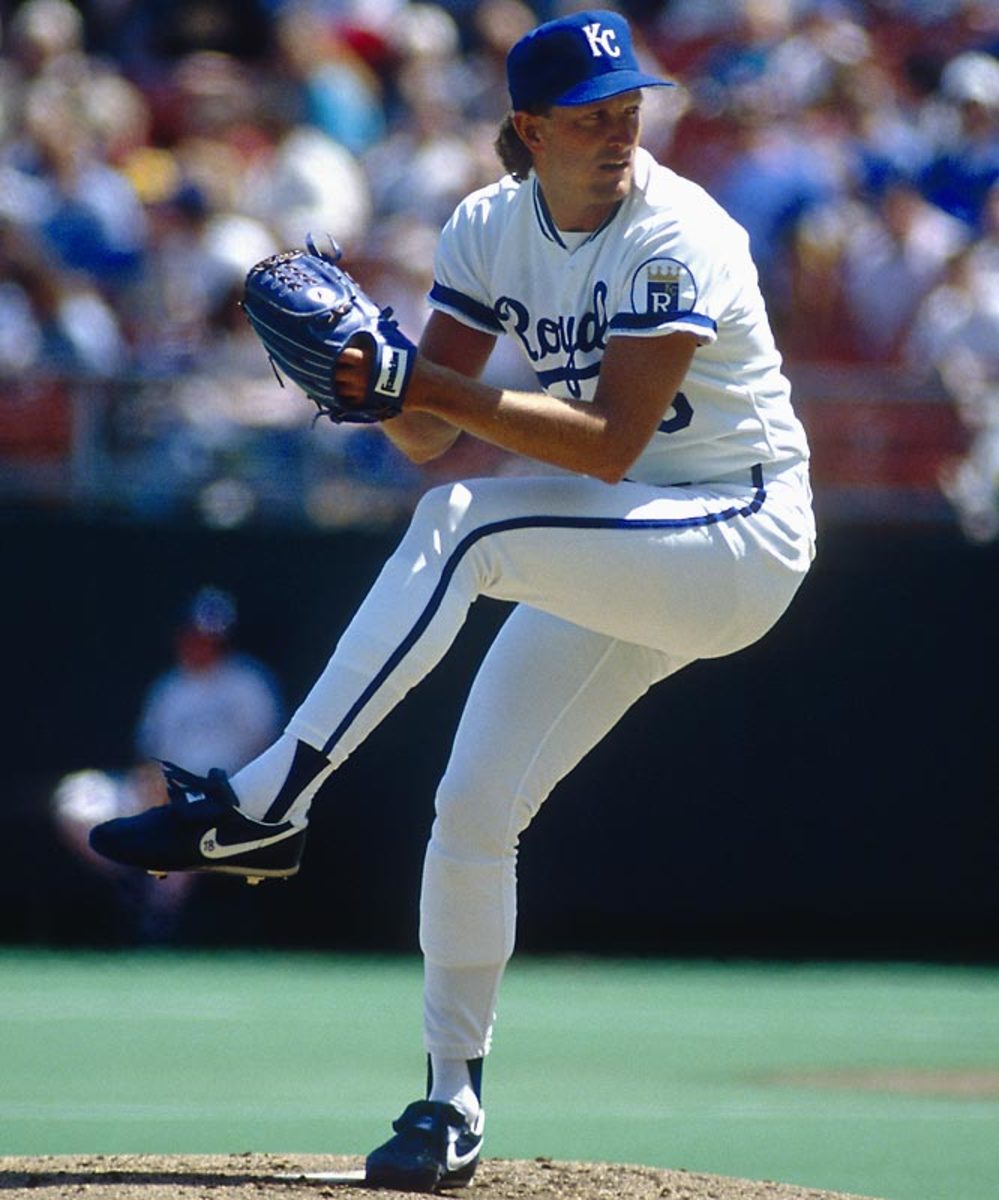
Saberhagen had already won two Cy Young awards and pitched a shutout in the clinching Game 7 of the World Series in 1985, but had never thrown a no-hitter. He helped himself by snaring an eighth-inning line drive by Ozzie Guillen that would have been a hit. The last out was made by future Hall of Famer Frank Thomas on a ground out to second base.
Nationals (Expos)
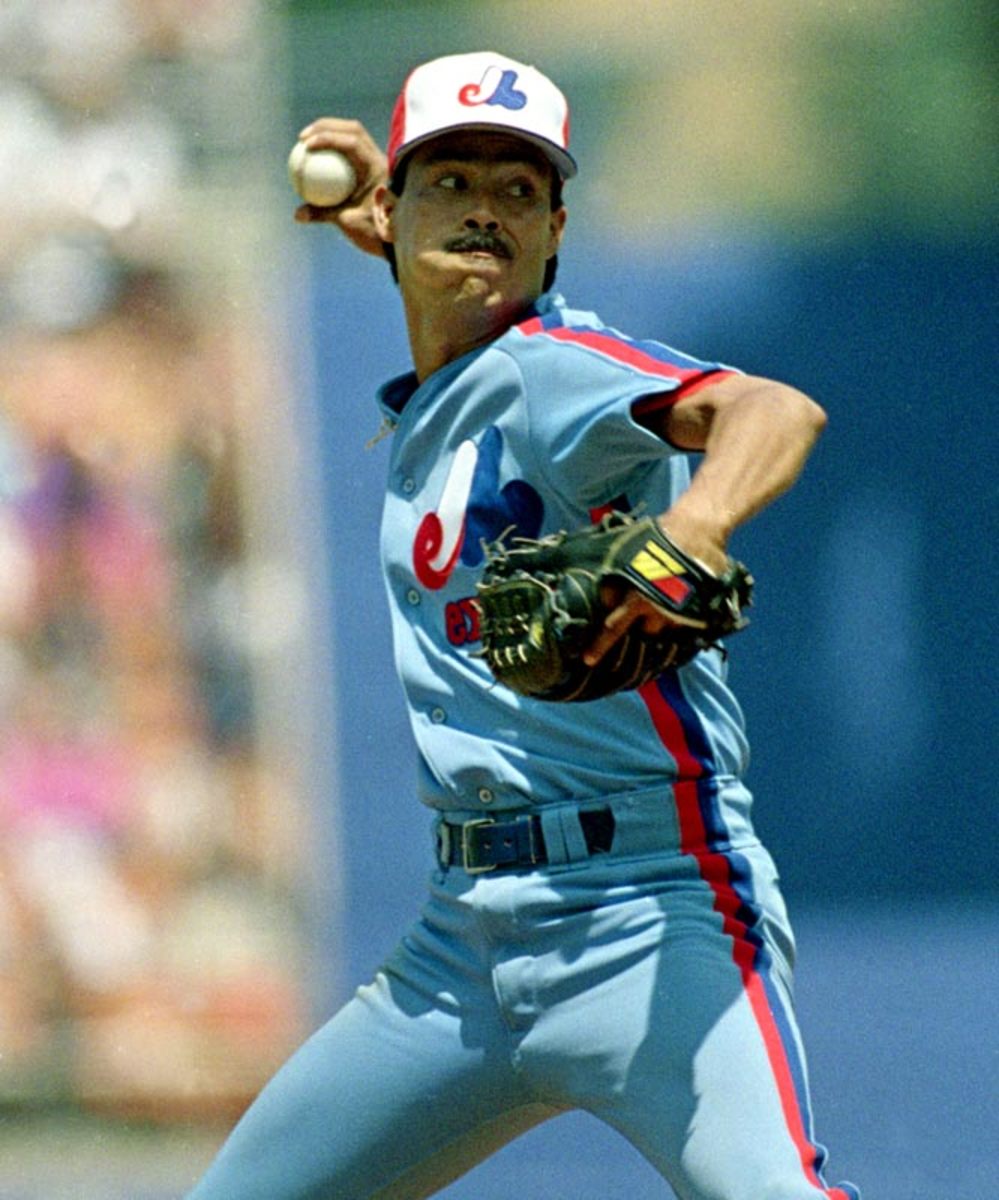
While the Nationals still played north of the border as the Expos, Martinez threw the 13th perfect game in major league history in a 2-0 victory over the Dodgers.
Orioles
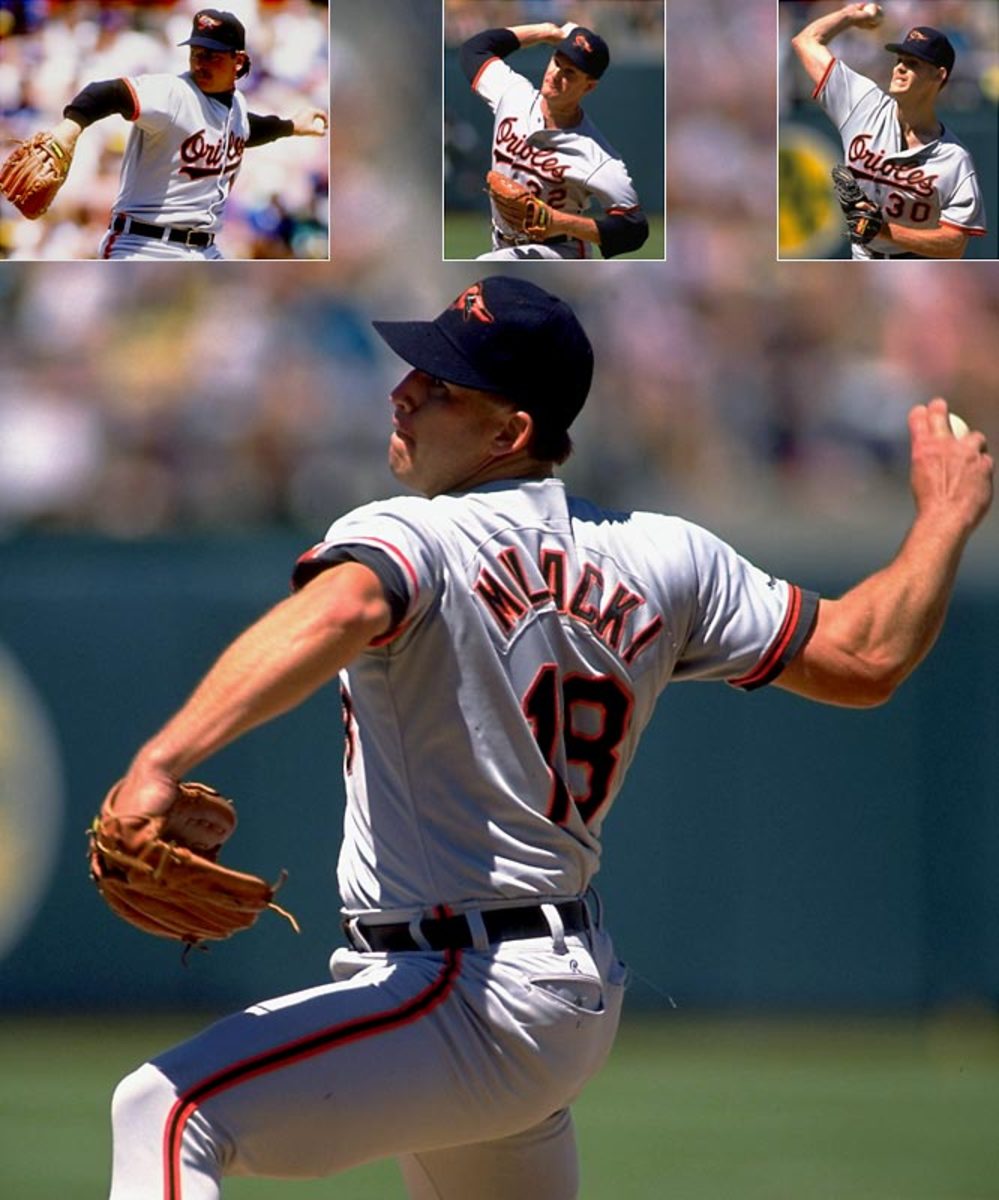
Milacki, (inset left to right) Flanagan, Williamson and Olson combined to equal the most pitchers used for a no-hitter in American League history by blanking the A's. Olson pitched the first six innings but left after he injured his hand deflecting a ball hit by Oakland's Willie Wilson. Flanagan, Williamson and Olson each pitched one hitless inning.
Blue Jays

Four times previously, Stieb had taken a no-hitter into the ninth. Three times he lost it with one out to go, including back-to-back starts in September 1988, the only time that's ever happened in baseball history. His luck finally changed on this night when he got Cleveland's Jeremy Browne to line to right for the final out of a 3-0 shutout. "I had much better stuff the other times, much better control. I always knew it took a lot of luck to get a no-hitter," he said afterward.
Brewers
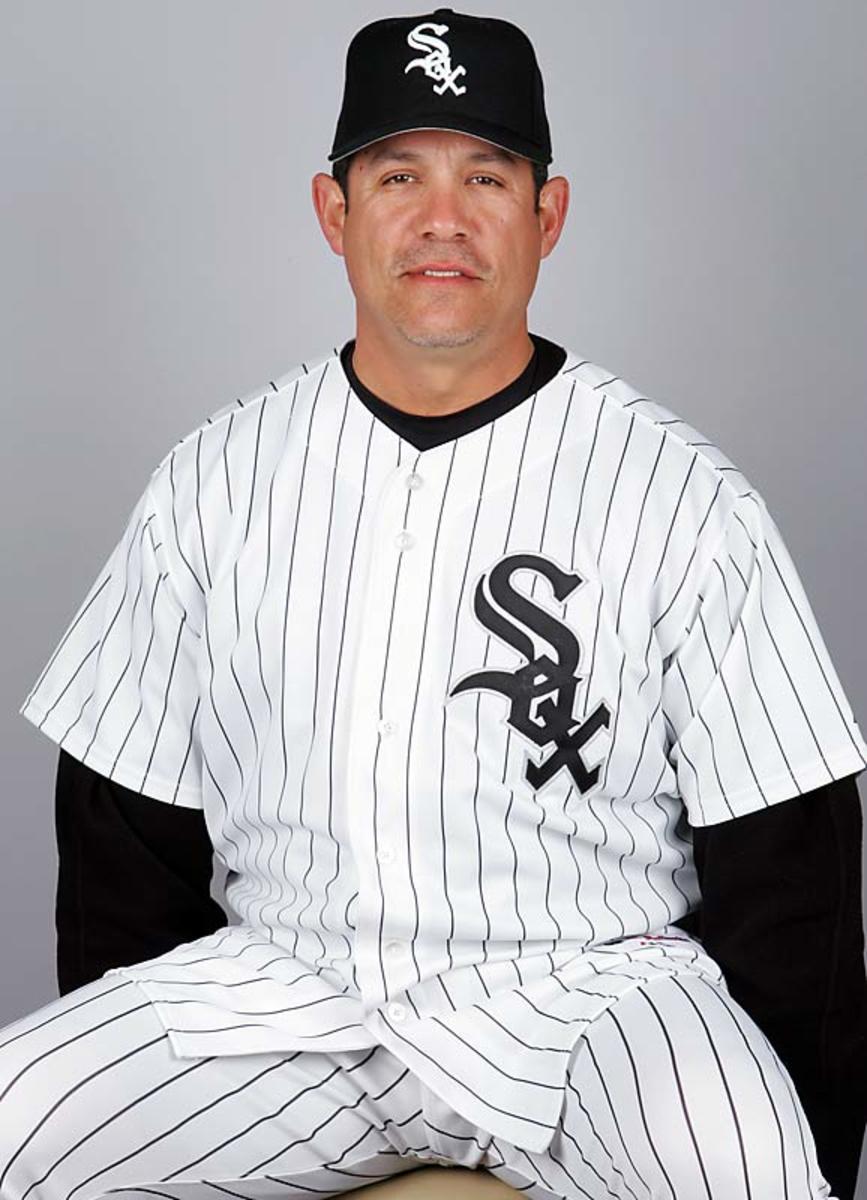
Now a coach with the White Sox, Nieves became the second-youngest pitcher in major league history to throw a no-hitter when he shut down the Orioles 7-0 at age 22. Eighteen months later, an arm injury ended his career.
Indians

With a losing career record, Barker was an otherwise forgettable pitcher, except for what he achieved in May 1981, when he pitched just the tenth perfect game ever. ''I run into people almost every day who want to talk about it,'' he said in 2006. ''Everyone says, 'You're probably tired of talking about it.' I say, 'No, it's something to be proud of.' It's a special thing.''
One could point out that neither Scherzer, who immediately threw his head back in disappointment upon the pitch hitting Tabata, nor any one else on the Nationals protested the call. That’s true, though manager Matt Williams said after the game that his lack of protest was due to the fact that, with the no-hitter still intact, he didn’t want to disrupt Scherzer’s rhythm.
The final word on the subject, however, must be Scherzer’s, and Scherzer blamed himself, not Tabata for the hit-by-pitch. “Just didn’t finish the pitch,” he told the Washington Post after the game. “[It] backed up on me and clipped him. It’s just one of those things that happened.”
It’s worth noting that “whether the batter made any attempt to avoid being touched by the ball” is not reviewable under MLB’s current replay rules. That’s primarily because it is a judgment call on the part of the umpire and not something that a replay can answer definitively (though in this case, the replay was as close to definitive as it can get such a situation). Thus there was an extremely high chance that any argument would have been fruitless, with the upside being a full-count that would have left Tabata in a strong position to break up the perfect game (coming into that at-bat, hitters had a .412 on-base percentage against Scherzer this season once the count went full).
• MORE MLB:Scherzer loses perfection late, still spins no-no
And so rather than being one of 24 major leaguers to throw a perfect game, Scherzer joined an even more exclusive club, becoming just the 12th man to lose a perfect game with two outs in the ninth inning, and just the third pitcher ever to lose a perfect game with two outs in the ninth inning but hold on to complete the no-hitter. The first two hold interesting parallels to Scherzer. New York Giants stalwart George “Hook” Wiltse hit the 27th man he faced with a pitch on July 4, 1908, losing his perfect game, but retiring the next hitter. Wiltse and Scherzer are the only pitchers ever to lose a perfect game with two outs in the ninth by hitting the 27th batter. Unlike Scherzer, however, Wiltse wasn’t done after getting the last out of the ninth. His game was scoreless after nine innings. Wiltse needed the Giants to score a run in the top of the ninth, which they did, and to pitch another hitless inning bottom of the 10th, which he did, to get his no-hitter.
Wiltse was also reportedly the victim of a blown call. The pitch prior to the one that his 27th batter was said to have been a strike on a 1-2 count that home plate umpire Cy Rigler mistakenly called a ball according to no less authoritative a source than Rigler himself. The other pitcher to lose a perfect game on his 27th batter but complete the no-hitter also believes he was the victim of a blown strike call, though in his case, both the umpire and video evidence, admittedly from a poor angle to judge balls and strikes, disagree.
On September 2, 1972, the Cubs’ Milt Pappas was where Scherzer would have been if the pitch that hit Tabata was ruled a ball, one strike away from perfection with a full count on his 27th batter. Pappas thought he had Padres pinch-hitter Larry Stahl struck out with the payoff pitch, but second-year umpire Bruce Froemming disagreed, calling ball four and sending Stahl to first base. Pappas flew into a rage, but still managed to get the next man to pop out to get the no-hitter. One can imagine Pappas had the image of the final pitch of Don Larsen’s perfect game in the 1956 World Series in his head, an outside pitch on a check swing that could have gone either way, when Froemming called the pitch and not the moment. Still, it looks low and away to me.
Of course, there was one other perfect game that was famously ruined by a blown call on the final batter. That being Tigers righty Armando Galarraga’s bid against Cleveland on June 2, 2010. Galarraga got his 27th man to ground out to first, but veteran umpire Jim Joyce blew the call, something he, like Rigler, admitted, tearfully, after the game. Indeed, the replay was clear as day. The runner was out by roughly three feet. Had that game happened after the implementation of instant replay last year, it would have been a perfect game. As such, I tend to think of it as baseball’s only 28-out perfect game, though officially it was a one-hitter.
Scherzer’s game was neither of those things, but it did raise some questions of sportsmanship. If Tabata did indeed get hit by that pitch intentionally, which to my eye, he did, was he wrong to have done so? One argument says that in a 6-0 game, the Pirates’ chances of a comeback, and indeed the run Tabata represented, were not significant enough to warrant such a questionable action. The flip side of that says that baseball has no clock, the Pirates are a good team, Scherzer was over 100 pitches on a hot afternoon in Washington, DC, and that getting on base by any means necessary was Tabata’s job as a pinch-hitter in that situation.
Did Jose Tabata lean in, ruin Max Scherzer’s perfect game?
That debate recalls the furor that erupted in May 2001, when Curt Schilling took a perfect game into the eighth inning against the Padres in San Diego and, with one out in the eighth, Padres catcher Ben Davis bunted for a single to break up the bid. Davis was demonized for the move, but his team was trailing just 2-0 at the time. Bunting for a hit brought the tying run to the plate in a pitchers’ duel between Schilling and Adam Eaton, both of whom would complete the game. That tying run, meanwhile, was represented by right-fielder Bubba Trammell, a legitimate home-run threat who would hit 25 homers that year. Davis’s bunt was a much more justifiable baseball play than Tabata getting in the way of Scherzer’s pitch, but Davis still caught hell for it.
I don’t have much regard for baseball’s unwritten rules, but I’ll admit that what Tabata did Saturday afternoon bothered me. Still, I don’t see Tabata as the villain here. Yes, he may have gone against baseball etiquette by sticking his elbow in front of a pitch down 6-0 with the opposing pitcher one strike away from a perfect game, but there’s a rule on the books that allows the umpires to disallow the result. That they failed to do so bothers me far more than the fact that Tabata put them in the position to have to make that judgment in the first place.
#http://www.120sports.com/video/v131937686/scherzer-on-his-nohitter
